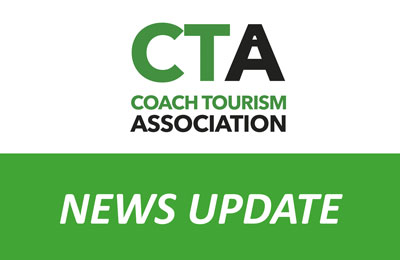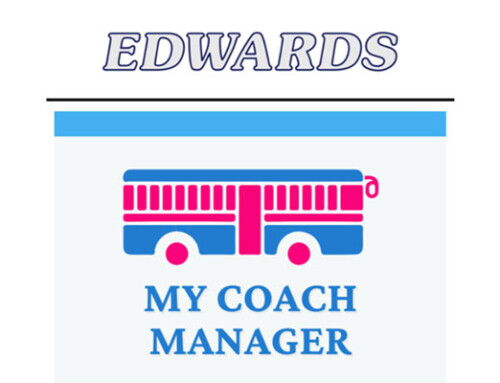COVID-19 Updates – week commencing 13/04/20
Here is a further update of developments from the government and various links to interpretation and guidance.
Go to date:
14 April 2020 …
Update from Tourism Alliance:
The DCMS Select Committee have launched an inquiry on the impact of Coronavirus on all sectors under DCMS’s remit. In particular, the Committee is interested in finding out:
• What has been the immediate impact of Covid-19 on the sector?
• How effectively has the support provided by DCMS, other Government departments and arms-length bodies addressed the sector’s needs?
• What will the likely long-term impacts of Covid-19 be on the sector, and what support is needed to deal with those?
• What lessons can be learnt from how DCMS, arms-length bodies and the sector have dealt with Covid-19?
• How might the sector evolve after Covid-19, and how can DCMS support such innovation to deal with future challenges?
The deadline for written evidence is 1 May 2020 – although they say that there could well be flexibility on this due to the pressures on organisations at the moment. I will be developing a Tourism Alliance submission so if there is any information or issues that you would like included, please let me know.
Here’s this link to the website https://committees.parliament.uk/work/250/impact-of-covid19-on-dcms-sectors/
15 April 2020 …
Operational update from CPT:
CORONAVIRUS JOB RETENTION SCHEME – CHANGES TO ELIGIBILITY
When the CJRS was first announced by the Chancellor on 20th March a worker needed to be employed on February 28 2020 in order to qualify for support from the scheme..
New guidance published today by HM Treasury has confirmed the eligibility date has been extended to March 19 2020.
Therefore employers can claim for any furloughed employees that were employed and on their PAYE payroll on or before 19 March 2020. This means that there must have been an RTI submission notifying HMRC of payment in respect of the employee on or before 19 March 2020
This is an important change to the Coronavirus Job Retention Scheme that CPT had requested on behalf of members.
Further guidance on how to make claims through the scheme is expected shortly.
16 April 2020 …
Operational update from CPT:
CORONAVIRUS JOB RETENTION SCHEME – HOW TO MAKE A CLAIM
Yesterday (15th April) HMRC released further guidance on how employers can make claims for payments for furloughed workers under the CJRS.
It has previously been announced that the Portal where employers will make their claims will be open on 20th April, and that the first payments under the scheme will be made on 30th April
HMRC requests that employers keep employees informed and answer any questions they may have. HMRC will not be able to provide employees with details relating to claims that employers have made, so employers should refrain from advising their employees to contact HMRC
CHANGE TO ELIGIBILITY – PAYROLL DATE
An important and fundamental change to CJRS announced yesterday covers the date when an employer needs to have created and started a PAYE payroll scheme. Initially this date was 28 February 2020, but this has now been extended to encompass employers who had completed this on or before 19 March 2020.
Employees can also now be placed on furlough if they were on PAYE payroll on or before 19 March 2020 (previously on or before 28 February 2020), and where HMRC was notified of them on an RTI submission on or before 19 March 2020.
Employees who were employed on 28 February, and who subsequently prior to 19 March were made redundant or left employment can also qualify for the scheme if they are re-employed by their employer and placed on furlough.
There is also confirmation that if an employee has had numerous employers over the past year (only working for one of them at any given time) and is being furloughed by their current employer, any former employer/s cannot re-employ them to place on furlough and claim wages through the scheme.
The change in eligibility date also means that the guidance says that in order to calculate 80% of the wages for full time or part time employees with a fixed salary, you must use the salary in the last pay period prior to 19 March 2020.
HOW TO PLACE EMPLOYEES ON FURLOUGH
Employers should discuss the situation with their staff and make any changes to the employment contract by agreement.
Any employees you place on furlough must be furloughed for a minimum period of 3 consecutive weeks.
When they return to work, they must be taken off furlough.
Employees can be furloughed multiple times, but each separate instance must be for a minimum period of 3 consecutive weeks.
The agreement to place a employee on furlough must be in writing and signed by both parties. A copy of this written agreement should be kept for at least 5 years
An example of a written agreement can be found on the link below
Employers may need to seek legal advice on the process.
If sufficient numbers of staff are involved, it may be necessary to engage collective consultation processes to procure agreement to changes to terms of employment
HOW TO MAKE A CLAIM
In order to begin a claim for payment from the CJRS the employer will need to supply certain information which is shown below.
Payroll agents who are authorised to act for their clients for PAYE purposes will be able to make claims on their behalf, but file only agents cannot.
To claim, the employer details that must be provided are:
- Employer PAYE reference number
- Number of employees being furloughed
- Self Assessment Unique Taxpayer Reference or Corporation Tax Unique Taxpayer Reference or Company Registration Number
- the bank account number and sort code where payment should be received
- a contact name and phone number
For each individual employee the details required are:
- Full name
- NI number
- the claim period (start and end date)
- Full amount claimed for each minimum length of furlough (3 consecutive weeks)
- payroll / employee number (optional)
Where the employer has fewer than 100 furloughed staff the employee details required will need to be entered individually
Where the employer has more than 100 employees the details can be entered on a spreadsheet file that should be uploaded directly into the portal. The file can be in either .xls .xlsx .csv or .ods format
Employers should retain all records and calculations in respect of all claims made through the CJRS. HMRC will retrospectively audit claims to ensure compliance
Employers should claim using the amounts in their payroll – either shortly before or during running payroll. Claims can be backdated until the 1 March where employees have already been furloughed.
If appropriate, worker’s wages should be reduced to 80% of their salary within your payroll before they are paid.
This adjustment will not be made by HMRC
HMRC will check the claim made, and if there are no errors payment will be made by BACS to a UK bank account.
Employees must receive all of the grant for their gross pay in the form of money.
Furloughed staff must receive no less than 80% of their reference pay (up to the monthly cap of £2500).
Employers cannot deduct any administration charge, fees or other costs in connection with the employment from the payment
HMRC will process all claims made before the scheme ends
FREQUENTLY ASKED QUESTIONS – MEMBERS QUESTIONS
Q: Can I roll-on/roll-off employees from furlough?
A: Yes, as long as those who are furloughed are away from work for a continuous period of at least three weeks. The guidance states that workers can only be furloughed for a minimum of three weeks at a time
Beyond that workers can rotate between being furloughed and being at work
This means that you could furlough a worker for three weeks, then recall them to work for as many weeks as you wish, before furloughing them for another three weeks, and then recall them again
Q: Can a worker refuse to be furloughed?
A: Yes. If this happens you are able explain to the worker that the alternative is redundancy, if that is the case
The worker will still have their statutory rights protecting against unfair dismissal, so if they refuse to be furloughed you would still need to follow a fair redundancy process
Q: Can I still furlough workers if I cannot afford to pay them until I receive the grant?
A: Yes, although you will need to agree with the workers that their wages can be deferred until you receive the grant. This agreement should be in writing as it’s a significant change to the employment contract
Q: Can I make a furloughed employee redundant?
A: Yes, although you must follow legal redundancy processes, such as consultation, as furloughed workers maintain all of their employment rights
If you decide to automatically make anyone redundant without going through a proper redundancy process you may be judged to have instigated an unfair selection process
Q: Do furloughed workers still accrue holiday?
A: Yes. Employees retain all their rights under the Working Time Regulations
Q: Can an employer contact an employee who is on furlough?
A: While workers are not allowed to do any work while they are on furlough leave, they can still have contact with the company. What’s important is that they do not work for the organisation, including doing anything that creates revenue
Q: Can I furlough an employee who is “shielding” for 12 weeks on advice from the Government?
A: Yes. If the workers are self-isolating (shielding) for 12 weeks in line with Government guidance, then they can be placed on furlough and 80% of their wages claimed back through CJRS
If you previously placed them on SSP, this claim must end before the period of furlough begins
Q: What happens if an employee becomes sick while on furlough?
A: Furloughed employees who become ill must be paid at least the amount they would have received if on statutory sick pay (SSP)
Employers should remember that placing a furloughed worker on SSP would break the furlough period as they would then be classified as working
During this time their salary cannot be covered by the scheme, and employers not be able to claim for previous furloughed time if the move onto SSP happens before the minimum three-week qualification period
The government guidance says that it’s up to employers to decide whether to move workers onto SSP or to keep them on furlough
17 April 2020 …
Operations updates from CPT:
SUSPENSION OF MEDICAL REQUIREMENTS
The Secretary of State for Transport, Grant Schapps has announced that there will be a temporary suspension of the requirement for drivers to undertake a medical examination and supply a completed D4 medical form when they renew their vocational licence entitlement.
This temporary change will only apply to those drivers whose licences are due to expire in 2020 or have expired since 1 January 2020 and most importantly do not have a health condition that would mean that their licence would not normally be renewed.
Drivers with health issues will still need to declare these, and those with health issues that prevent them from driving safely will not have their licence renewed.
The licence will only be valid for 1 year instead of the usual 5 years, and then the driver will need to submit a completed D4 when the licence is next due for renewal.
CORONAVIRUS JOB RETENTION SCHEME EXTENSION
Chancellor of the Exchequer Rishi Sunak announced today (17th April) that the Coronavirus Job Retention Scheme from which employers can claim up to 80% of Furloughed employees normal wages will be available for another month until the end of June
The chancellor said the salary scheme would be extended again “if necessary”
The Chancellor said in his announcement “With the extension of the coronavirus lockdown measures yesterday, it is the right decision to extend the furlough scheme for a month to the end of June to provide clarity,”
Members are reminded that the HMRC portal through which they can claim the subsidy will be open from 20th April, and the first payments are expected to be made on 30th April
UKInbound webinar – Leadership in a Time of Crisis
UKInbound has kindly agreed that we can share the link to an excellent webinar, Leadership in a Time of Crisis.
And download the presentation here
ETOA webinars
CTA members can also access useful updates, webinars and information on the ETOA Coronavirus Hub











